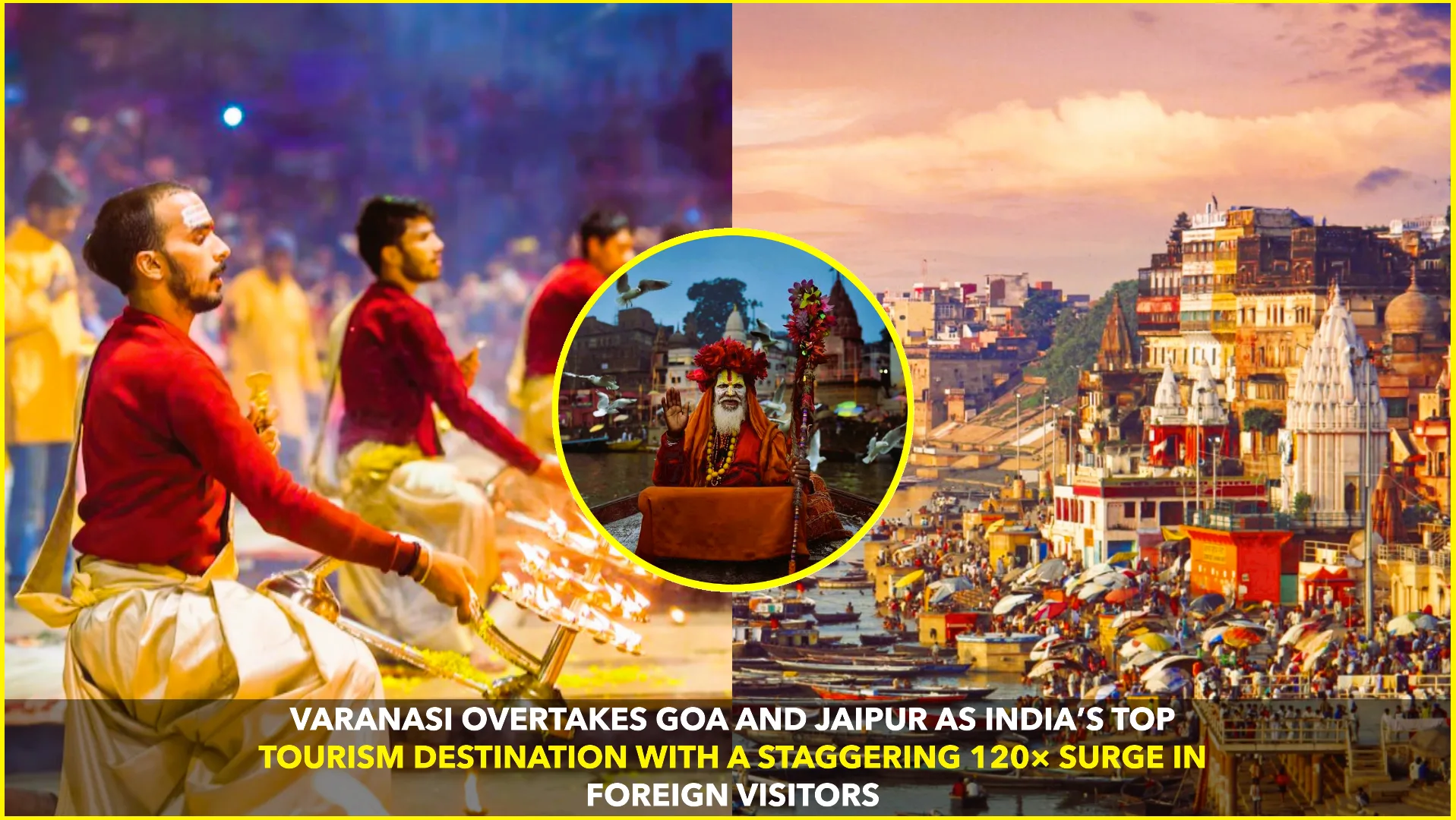Varanasi — one of the world’s oldest living cities — has officially overtaken Goa and Jaipur to become India’s most visited tourism destination. According to government tourism data, the city has recorded a phenomenal 120-fold rise in foreign visitors in just three years, redefining India’s spiritual and cultural travel landscape.
A report by Moneycontrol states that foreign tourist arrivals in Varanasi increased from only 2,566 in 2021 to 3,09,932 in 2024, marking an exponential growth driven by a blend of spirituality, heritage, and improved city infrastructure (Moneycontrol).
Meanwhile, Travel and Tour World highlights that by mid-2025, over 1.87 lakh foreign tourists had already visited the city — proof that global travelers are increasingly drawn to the mystique of Kashi, as Varanasi is traditionally known (Travel and Tour World).
Domestically, the city’s numbers are equally staggering. From 30.7 lakh Indian visitors in 2021, Varanasi’s tourism exploded to over 10.97 crore in 2024, according to data published by Organiser (Organiser). The report adds that Varanasi has surpassed not just Jaipur and Goa, but also hill stations like Shimla to become the fastest-growing tourism hub in India.
The Transformation of Kashi
So what explains this dramatic rise? Experts point to a combination of spiritual rebranding, government initiatives, and world-class infrastructure. The Kashi Vishwanath Corridor, inaugurated in 2021, has given the city’s ancient ghats and temples a modern facelift, allowing seamless access to pilgrims and tourists. The Times of India notes that improved connectivity by air, road, and rail has made Varanasi more accessible to global visitors than ever before (Times of India).
Tourism experts also credit the government’s focus on transforming Varanasi into a global spiritual destination under the broader “Heritage City Development and Augmentation Yojana (HRIDAY)” and Smart City Mission. Initiatives like riverfront cleaning, ghat illumination, and cultural festivals have helped rejuvenate the city’s image among international travelers.
Cultural Magnetism and Global Appeal
Unlike Goa’s beach-centric tourism or Jaipur’s palace heritage, Varanasi’s charm lies in its spiritual authenticity. Travelers come to experience sunrise boat rides on the Ganges, evening Ganga Aartis, silk weaving, and traditional music that define India’s cultural soul. According to Travel and Tour World, this combination of spirituality and culture is what makes Varanasi a standout destination on the global map (Travel and Tour World).
Furthermore, the economic benefits have been immense. Local artisans, hoteliers, and small businesses have seen an unprecedented rise in demand. The boom has created jobs in hospitality, transport, guiding services, and the craft sector.
Looking Ahead
While the surge is remarkable, urban planners warn that sustainable growth must remain a priority. Overcrowding and environmental stress could threaten the city’s heritage if not managed carefully. Experts advocate for responsible tourism, improved waste management, and continued investment in infrastructure.
Despite these concerns, Varanasi’s rise is being celebrated as a symbol of India’s tourism revival. Once primarily a destination for Hindu pilgrims, Kashi is now attracting wellness seekers, photographers, historians, and culture enthusiasts from across the globe.
The transformation underscores a larger shift — India’s spiritual cities are no longer just pilgrimage sites but global cultural destinations. And leading that transformation is Varanasi — timeless, sacred, and now, the heart of Indian tourism.










